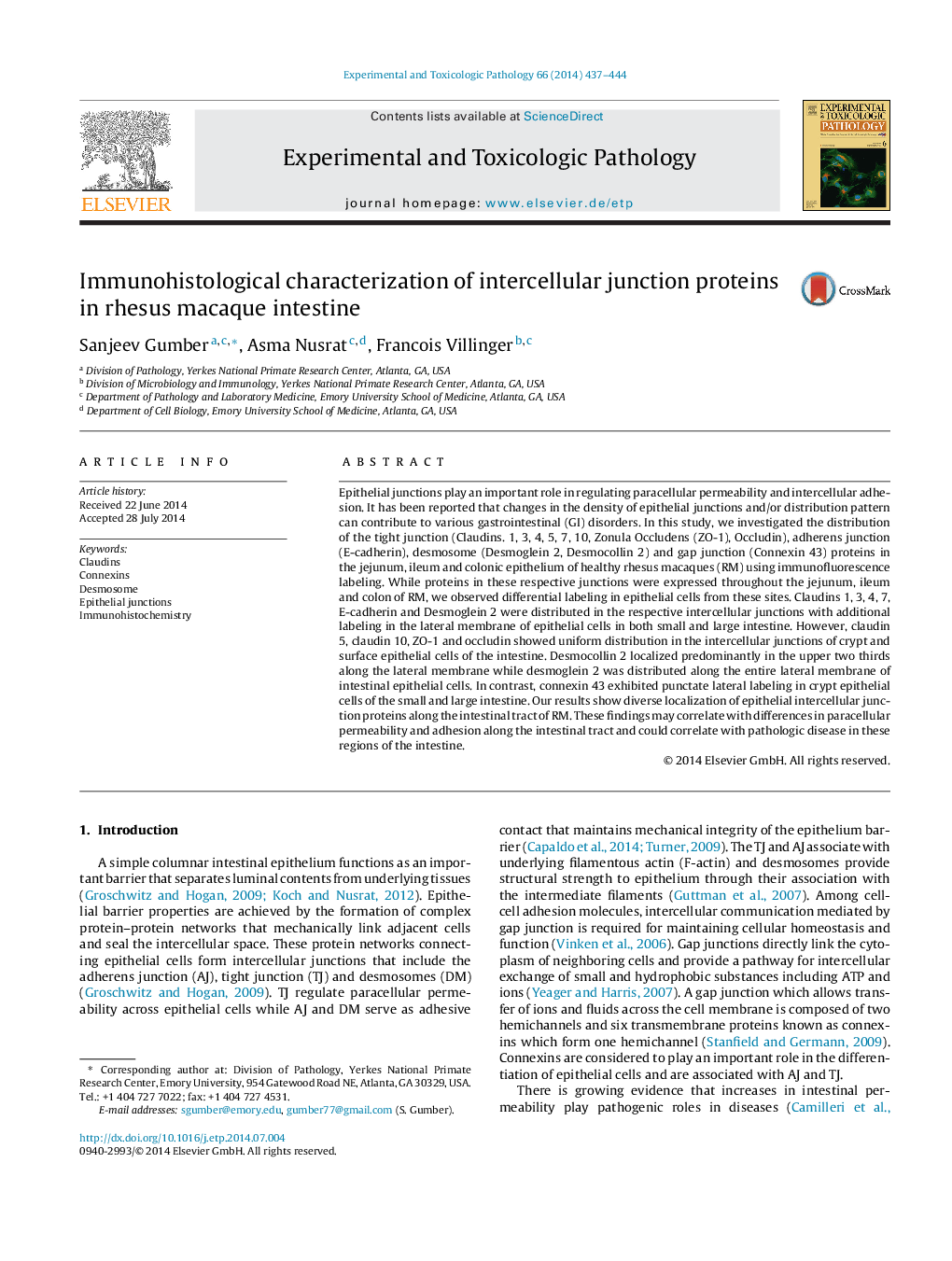| Article ID | Journal | Published Year | Pages | File Type |
|---|---|---|---|---|
| 2498871 | Experimental and Toxicologic Pathology | 2014 | 8 Pages |
Epithelial junctions play an important role in regulating paracellular permeability and intercellular adhesion. It has been reported that changes in the density of epithelial junctions and/or distribution pattern can contribute to various gastrointestinal (GI) disorders. In this study, we investigated the distribution of the tight junction (Claudins. 1, 3, 4, 5, 7, 10, Zonula Occludens (ZO-1), Occludin), adherens junction (E-cadherin), desmosome (Desmoglein 2, Desmocollin 2) and gap junction (Connexin 43) proteins in the jejunum, ileum and colonic epithelium of healthy rhesus macaques (RM) using immunofluorescence labeling. While proteins in these respective junctions were expressed throughout the jejunum, ileum and colon of RM, we observed differential labeling in epithelial cells from these sites. Claudins 1, 3, 4, 7, E-cadherin and Desmoglein 2 were distributed in the respective intercellular junctions with additional labeling in the lateral membrane of epithelial cells in both small and large intestine. However, claudin 5, claudin 10, ZO-1 and occludin showed uniform distribution in the intercellular junctions of crypt and surface epithelial cells of the intestine. Desmocollin 2 localized predominantly in the upper two thirds along the lateral membrane while desmoglein 2 was distributed along the entire lateral membrane of intestinal epithelial cells. In contrast, connexin 43 exhibited punctate lateral labeling in crypt epithelial cells of the small and large intestine. Our results show diverse localization of epithelial intercellular junction proteins along the intestinal tract of RM. These findings may correlate with differences in paracellular permeability and adhesion along the intestinal tract and could correlate with pathologic disease in these regions of the intestine.
